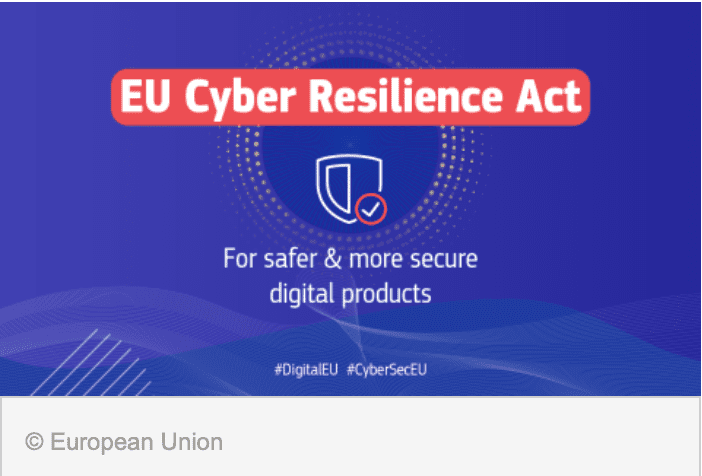European Union has just published a proposal for a regulation that ‘bolsters cybersecurity rules to ensure more secure hardware and software products’.
There are yet business regulations and good practices, in particular with the IoT Security Assurance Framework provided by the IoT Security Foundation (IoTSF).
A quick reading of the EU proposal reaches out some comments. What are the security requirements? Which suppliers are concerned? When this new regulation will be enforced?
Here are some extracts from the proposal. We do think wording and terms should be clarified.
The Economic operators are described as ‘the manufacturer, the authorized representative, the importer, the distributor, or any other natural or legal person who is subject to obligations laid down by [the] Regulation’.
To allow manufacturers, notified bodies and Member States time to adapt to the new requirements, the proposed Regulation will become applicable [24 months] after its entry into force, except for the reporting obligation on manufacturers, which would apply from [12 months] after the date of entry into force.
… for the expected product lifetime or for a period of five years from the placing of the product on the market, whichever is shorter, manufacturers shall ensure that vulnerabilities of that product are handled effectively and in accordance with the essential requirements set out in [the Vulnerability Handling Requirements] – see below.
Vulnerability Handling Requirements
Manufacturers of the products with digital elements shall:
- identify and document vulnerabilities and components contained in the product, including by drawing up a software bill of materials in a commonly used and machine-readable format covering at the very least the top-level dependencies of the product;
- in relation to the risks posed to the products with digital elements, address and remediate vulnerabilities without delay, including by providing security updates;
- apply effective and regular tests and reviews of the security of the product with digital elements;
- once a security update has been made available, publically disclose information about fixed vulnerabilities, including a description of the vulnerabilities, information allowing users to identify the product with digital elements affected, the impacts of the vulnerabilities, their severity and information helping users to remediate the vulnerabilities;
- put in place and enforce a policy on coordinated vulnerability disclosure;
- take measures to facilitate the sharing of information about potential vulnerabilities in their product with digital elements as well as in third party components contained in that product, including by providing a contact address for the reporting of the vulnerabilities discovered in the product with digital elements;
- provide for mechanisms to securely distribute updates for products with digital elements to ensure that exploitable vulnerabilities are fixed or mitigated in a timely manner;
- ensure that, where security patches or updates are available to address identified security issues, they are disseminated without delay and free of charge, accompanied by advisory messages providing users with the relevant information, including on potential action to be taken.
Annex 1: ESSENTIAL CYBERSECURITY REQUIREMENTS
- Products with digital elements shall be designed, developed and produced in such a way that they ensure an appropriate level of cybersecurity based on the risks;
- Products with digital elements shall be delivered without any known exploitable vulnerabilities;
- On the basis of the risk assessment referred to in Article 10(2) and where applicable, products with digital elements shall:
(a) be delivered with a secure by default configuration, including the possibility to reset the product to its original state;
(b) ensure protection from unauthorised access by appropriate control mechanisms, including but not limited to authentication, identity or access management systems;
(c) protect the confidentiality of stored, transmitted or otherwise processed data, personal or other, such as by encrypting relevant data at rest or in transit by state of the art mechanisms;
(d) protect the integrity of stored, transmitted or otherwise processed data, personal or other, commands, programs and configuration against any manipulation or modification not authorised by the user, as well as report on corruptions;
(e) process only data, personal or other, that are adequate, relevant and limited to what is necessary in relation to the intended use of the product (‘minimisation of data’);
(f) protect the availability of essential functions, including the resilience against and mitigation of denial of service attacks;
(g) minimise their own negative impact on the availability of services provided by other devices or networks;
(h) be designed, developed and produced to limit attack surfaces, including external interfaces;
(i) be designed, developed and produced to reduce the impact of an incident using appropriate exploitation mitigation mechanisms and techniques;
(j) provide security related information by recording and/or monitoring relevant internal activity, including the access to or modification of data, services or functions;
(k) ensure that vulnerabilities can be addressed through security updates, including, where applicable, through automatic updates and the notification of available updates to users.




